Macro Calculator
This free, easy-to-use macro calculator gives you your optimal macronutrients and calories. It’s a weight loss or muscle gain calculator for both women and men.
Combine with macro counting or flexible dieting to reach your goals faster.
How to get leaner and stronger?
Our comprehensive macro-based fat loss program shows you how. Learn more
How do macros work?
The foods we eat are made up of three macros (macronutrients). These are carbohydrates (carbs), protein, and fat.
Chicken is high in protein but has no carbs; rice is high in carbs but has very little fat or protein. The three macronutrients provide the body with energy and raw materials for growth and repair.
By calculating the appropriate daily calorie amount for you, we can then break this down into the best macronutrient ratios to achieve weight loss.
Basic steps for macro counting
- Enter details into the calculator
Make sure to choose the correct goal. - Take note of your calories and macros
These will be the targets you are aiming for each day. - Track your macros
Use an app or pre-plan your meals. - Measure results
Don’t use basic weight scales.
Use proper body composition scales (we recommend Renpho) to measure fat and muscle mass changes.
What is a good macro ratio for fat loss or muscle gain?
Your macros should be based on your Total Daily Energy Expenditure (TDEE) and goals.
The calculator defaults to the best macro ratio proven to work for most people.
This ratio is:
- 30% fat
- Protein is 0.65 grams per pound of body weight,
- The remainder is carbs.
Depending on your goal, this will be either a calorie deficit or a surplus.
You can go further and make more adjustments: Perhaps you’re an extreme endomorph and do better with fewer carbs. Or perhaps you have one kidney and need to eat less protein.
You can fine-tune your results with a bit of math. See how to change your macros here.
What is a good protein ratio?
Rather than a percentage, proteins are based on your body weight. Our calculator has three settings:
- Moderate adjusts the ratio to 0.65 grams per pound of body weight.
This is appropriate for sedentary individuals or people with higher body fat percentages. - High is for active people with moderate strength training and an average body fat percentage.
- Maximum will set the ratio to 1 gram per pound.
This amount is good for bodybuilding and gaining muscle mass. You must be doing intense training.
Find out how to fine-tune your protein ratios when counting macros
Fat macro ratio
Set fat at 30% of daily energy expenditure.
Most people do very well with this amount of fat. See more about choosing the best macro fats. Because of high-fat diets like keto, many people are now eating more fat than they need to.
Carbohydrate macro ratio
Once you’ve calculated protein and fat, the remainder of your daily calories should be from carbohydrates.
Carbs fuel your body and workouts – and are the body’s preferred energy source.
If you are coming from a low-carb background, this may seem high. However, according to respected nutritional research, this is a moderate amount of carbs.
If you are eating according to your TDEE, the notion that carbs cause weight gain or stop fat loss is incorrect.
Using as a Calorie Deficit Calculator
As a weight loss calculator, this tool establishes a safe calorie deficit only.
The Lose option puts you in a 20% calorie deficit, promoting safe, steady weight loss.
The best macro ratio for body recomposition
If you want to recompose your body (lose fat and gain muscle simultaneously), then use the body recomposition calculator.
Macro ratio for maintenance
The Maintain button shows you the macro levels to maintain your current weight.
This is great if you have lost weight and don’t want to gain it back.
Macro ratio for muscle gain
The Gain button puts you in a 20% calorie surplus.
The macro breakdown is designed to build muscle fast in conjunction and must be combined with a comprehensive weight training program.
Underweight people can also use it.
TIP: Try starting with the maintenance goal and gradually increasing calories if you want lean muscle gains.
Calculating macros using your body fat percentage
The calculator uses your body weight to determine calories and macros.
However, you can obtain superior results by using your body fat percentage. The calculator allows you to choose which method: Normal for body weight, Lean Mass for fat percentage.
When to choose the Lean Mass Formula
If you are lean (have a low body fat percentage), choose the Lean Mass formula and enter your body fat %.
If you are classified as obese and have a lot of weight to lose, the lean mass formula is superior. You can read more about macro counting and obesity.
Help? Calculate your ideal body weight or get an assessment of your body fat percentage.
Why the difference? Muscle cells burn more calories than fat cells, so the more accurately we measure this, the better your results will be.
How to calculate macros per meal
You can break this down into meals once you’ve calculated your daily macros in the calculator.
Choose from 2 to 6 meals daily to see the macro ratio you can track for each meal. For some people, this is easier, but for others, this is too much detail.
Do what works for you.
Meal Plans
See a 5-day macro-based meal plan. It includes three meals and two snacks per day.
Macro calculator activity level settings
A higher activity level means a higher daily calorie goal.
For example – if you maintain your weight at 2,000 calories per day, adding vigorous daily exercise means you need more calories to maintain your weight.
If you are sedentary and trying to lose weight, adding exercise will increase your daily calorie goal.
The idea seems counter-intuitive, but more energy is required to fuel your workouts. More workouts lead to increasing metabolism; therefore, more fat is burned!
Undereating is one of the leading causes of the weight loss plateau.
So many of our clients previously “hit the wall” with dieting. They would continually reduce calories, stop losing fat, and gain weight when they eat a little more.
Macro counting defeats this by prescribing the right food and calorie levels.
Which activity level do I choose?
- Sedentary: Just regular everyday activity like a bit of walking, a couple of flights of stairs, eating, etc.
- Light: Any activity that burns 200-400 calories (females) or 250-500 calories (males) over your sedentary amount.
- Moderate: Any activity that burns 400-650 calories (females) or 500-800 calories (males) more than your sedentary amount.
- Extreme: Any activity that burns more than 650 calories (females) or more than 800 calories (males) in addition to your sedentary amount.
Other options for determining your calorie burn
- Use our calories burned calculator – it accurately assesses over 380 activities.
- Use a fitness tracker – like a Fitbit or Apple Watch (note that they can overestimate calorie burn).
- Use a suitable app – like MapMyFitness
Why should I eat more when I exercise more?
High physical activity not fueled with enough calories will lead to muscle catabolism (breakdown of muscle fiber).
This lack of nutrition could stall your weight loss, so eat up if you love to exercise!
I’ve got my macros – now what?
Once you’ve identified your target daily macros, you must determine the macros in all your foods.
By tracking them daily, you can reach your recommended macro targets that encourage fat loss, muscle gain, or whatever your goal may be.
You can learn more about the macro counting system and the flexible dieting philosophy. Many people use an app like Myfitnesspal to track macros.
For more specifics on what to eat – see a sample macro meal plan or a list of macros for familiar foods.
View article sourcesSources
- Mifflin, M. D., St Jeor, S. T., Hill, L. A., Scott, B. J., Daugherty, S. A., & Koh, Y. O. (1990). A new predictive equation for resting energy expenditure in healthy individuals. The American Journal of Clinical Nutrition, 51 (2), 241-247. Link
- McArdle, W. D., Katch, F. I., & Katch, V. L. (2010). Exercise physiology: nutrition, energy, and human performance. Lippincott Williams & Wilkins. Link
- Jequier, E. (1994). Carbohydrates as a source of energy. The American journal of clinical nutrition, 59(3), 682S-685S.
- Lemon, P. W., Tarnopolsky, M. A., MacDougall, J. D., & Atkinson, S. A. (1992). Protein requirements and muscle mass/strength changes during intensive training in novice bodybuilders. Journal of Applied Physiology, 73(2), 767-775. study abstract link
- Grundy, S. M. (1999). The optimal ratio of fat-to-carbohydrate in the diet. Annual review of nutrition, 19(1), 325-341. abstract
- Conlin, L.A., Aguilar, D.T., Rogers, G.E. et al. Flexible vs. rigid dieting in resistance-trained individuals seeking to optimize their physiques: A randomized controlled trial. J Int Soc Sports Nutr 18, 52 (2021). https://doi.org/10.1186/s12970-021-00452-2
2,104 Comments


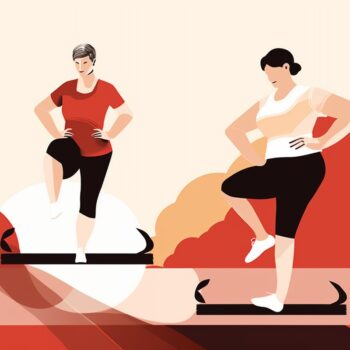 Menopause Macro Calculator
Menopause Macro Calculator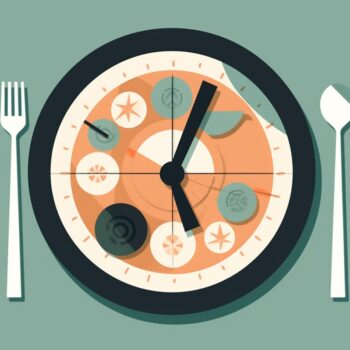 Intermittent Fasting Calculator
Intermittent Fasting Calculator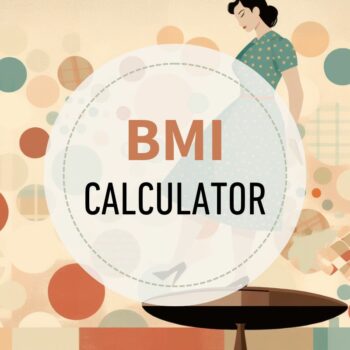 BMI Calculator
BMI Calculator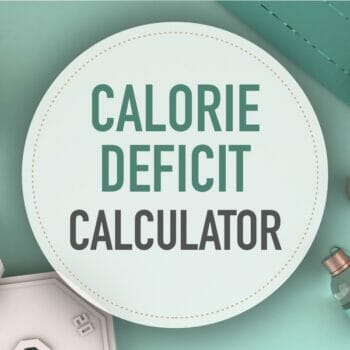 Calorie Deficit Calculator
Calorie Deficit Calculator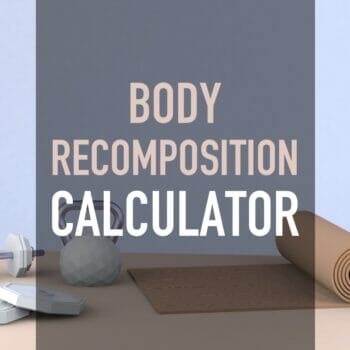 Body Recomposition Calculator
Body Recomposition Calculator
Hi Ted. I’m trying to get into tracking macros. I like the idea of this calculator though again, I’m unsure of activity level I would be. I’m 37yr F beauty therapist at around 8.8st and 157cm. I selected high protein as I lift heavy 5 days a week with a few cardio sessions, mainly short hiit. I’m getting 185c 125p 42f for maintenance, though I’d like to lean out, not necessarily lose weight. I love your comments on this if possible. Thanks.
Hi Rosie, If your weight training days are about an hour in duration than you are probably “moderately active” especially on the days that you also do HIIT. If you want to lean out you’ll have to be in a bit of a deficit so you should select “lose” also cut back to your “sedentary” (no exercise) macros on your rest days. Good luck!
Hey Ted! This website/calculator is great. I struggle with deciding which activity level to choose (as I am sure most do). I am a 23 year old female, 5’4″ and 143lbs. I would love to lose about 10lbs. I have been tracking for months now, working out about 3-4x a week and seeing muscular changes but still not losing the weight I want to. MFP currently has me on about 1200 cals a day. I sync my polar HR monitor to MFP which adds in calories from my workouts and I try to eat them back – but I don’t always. I chose the “sedentary lifestyle” on here which gave me a range of 1529 kcals/day, 169C/118P/42F. My thought is to base my day on these macros and then if I workout/burn calories, try to eat them back. Do you think this is a good approach? I am curious though, why should I increase my calories from 1200 to 1500 if I’m not seeing results on the scale? I also struggle sometimes just to eat the 1200 cals/day – I’m an ER Nurse and work 12 hour shifts, sometimes we don’t eat all day and I feel awful trying to cram calories in at the end of the day – I feel like that is doing my body more harm than good. Any suggestions you have would be awesome! Thanks so much.
Hi Laura, Thanks! I’m glad you find it useful. It looks like you selected something wrong? Here’s what I got for you. I like the “eat back your calories” approach and is what I personally do. My exercise varies and I rest most weekends so it just makes sense and I’ve seen some nice results by doing it this way. I also wouldn’t recommend cramming calories in at the end of the day, but plan better throughout the day to get those calories. Long periods of not eating, especially when you are very active can actually cause your body to conserve resources and not burn fat. I’m currently working on an article that discusses this very subject. If you are on your feet all day running around the ER then you might want to use “lightly active” as your baseline. You have to fuel your body and activity properly or your body will adapt and conserve.
Thanks so much for the helpful information and timely response! I will try using the lightly active option, it gives me 1529 calories/day. So, on the days that I have an intense workout (burning 500+ calories) you would suggest eating extra calories on top of my daily alotted calories, correct? Just want to make sure I don’t eat too much, but don’t want to have muscle catabolism (which I assume could be happening now as I eat 1200/day). Thanks again!
You’re welcome. 🙂 Yes, that’s correct. Do you use MyFitnessPal? I do and it makes it easier to keep track of everything including how many calories to eat back based on the exercise you do.
Hi Ted. I’m confused with carbs. Do I calculate all veggies in MFP as carbs as I eat tons of veg, or is it the starchy type carbs I need to add as carb intake? I tend to at the moment not eat starchy carbs unless I’ve done a heavy workout but just stick to veg as carb intake. Thanks.
Also.. Is it necessary to weigh and add coconut oil when cooking?
Hi Rose, Yes with flexible dieting all food counts even green veggies so enter them in MFP. Yes also measure your coconut oil used for cooking. It can be a lot of work at first but gets easier since MFP remembers things you usually eat.
Thanks for your reply. Can I just ask.. On rest days the macros change don’t they? I’m not sure what to adjust these to?
some people just eat the same each and everyday, but for people that aren’t getting the results they are looking for I recommend cutting back on rest days to your sedentary calories. If you are using MFP you really have to enter your sedentary calories/macros and then on exercise days track your exercise and eat those calories back. I explain how to set everything up here. https://healthyeater.com/iifym-myfitnesspal-tutorial
That’s great, thank you
How’s it going Ted my name is joseph and I’m overweight and I need to do something about it I been doing my research and came across this and am very curious how it all works I weight close to 300lbs and according to your calculater it’s saying for me to eat 58 grams of carbs per meal doesn’t that seem to much that’s with it being 3 meals per day
Hi Joseph, glad you found us and I’ll be the first to congratulate you on the decision to get healthier! Nope, flexible dieting isn’t low carb and we dismiss the notion that carbs make people fat when eaten within an individuals macro limits. I suggest you start with this article which will give you a better understanding of Flexible dieting and iifym. https://healthyeater.com/flexible-dieting Keep us posted 🙂
Hi! On My Fitness Pal the carb intake per day is set to 50 percent and here it’s just under 40 percent which is quite a big difference. Which should I follow?
My Fitness Pal doesn’t by default use Flexible Dieting ratios. To use MFP with flexible dieting you have set it up. We have a step by step tutorial here. https://healthyeater.com/iifym-myfitnesspal-tutorial
Argh too confusing! Every time I try to calculate macros it’s always different! Help! I’m 157cm, 55.8kg. I lift 5 times a week and HIIT train 15 mins afterwards 4 times a week. I want to get leaner, I’m desperate to lose the layer of stubborn fat!
Hi Ted, I’m trying to lose the last 60 pounds as recommended by my physician to get me to a more healthy range of weight. I’ve lost 60 pounds thus far and I really want to reach my goal by the end of the year if possible. I’m 32, 5’4, 236 lbs. Body fat is 42.6 % last time I checked a month ago after doing a fitness assessment with my gym. I’ve been lifting for about a month and I do so 3-4 tines a week with cardio mixed in. I burn between 600-1000+ when I work out. My body structure is changing but my weight is staying the same. So I’m wanting to try a macro lifestyle to get me there. It seems as though I’m going to be eating more then accustomed to but I’m willing. My calculations say 740 cals per meal. Is that right?
Hi India, Great job so far! It seems like to me you are overestimating your calorie burn. How long are your gym sessions? Also, you may want to eat at sedentary levels during your non-workout days.
Thank you Ted! My gym sessions last anywhere between 1 hour to almost 2 hours. I do zumba once a week as well which is an hour. I usually burn 600-700 just from that class alone. All depends. By eating at sedentary levels, what do you mean?
Wow, that’s hardcore! Sedentary means the amount of calories you burn each day just doing normal everyday activities. (no exercise) You just select that setting in our calculator for exercise and then select “lose”. This will give you a safe calorie deficit and then you can eat back the amount of calories you burn with your exercise on various days. Do you use myfitnesspal? If so, I have a detailed guide on how to set this up. https://healthyeater.com/iifym-myfitnesspal-tutorial
Hi Ted, thanks so much for creating this. I just want to make sure I get this right.
I’m 5’1, 107 pounds. I want to get more toned and maybe lose a couple of pounds. I workout heavy about 5 times / week. (Boot camp classes, HIIT running, strength training). I got 1,285 calories per day. Is that too low for my exercise level, or just right?
Hi Amanda, I think you underestimated your exercise. You are probably more like moderately active. That looks like the amount for light exercise.
Hi Ted! I know I am overthinking this, as I do with everything! But, I am 125 lbs, 5’4 and 25 yrs old. The last I checked my body fat was 17.5% I have been lifting for a very long time now (few years) and just can’t get rid of that last layer or two of stubborn fat! I chose higher protein since I lift about 6 days a week and came up with 1,791 cals/day @ 211g C/125g P/ 50g F I was trying to compare with other websites and find a medium but I guess everybody just has a different opinion? Most other sites were more around 2000 cals/day. I don’t want to be eating too much and going nowhere but Im also terrified of eating too little and my body storing fat. Anyways, I guess Im just curious if this sounds right to you? Lol, sorry for the book.
Hi Rochelle,
A couple things. First, It is really difficult for women to get below 15%, in fact for women athletes the range is 15%-20% and you are already there. A woman’s hormones are constantly working against fat loss because they are constantly trying to prepare the woman’s body for childbirth, which means higher body fat. Women bodybuilders practice some really unhealthy techniques to get there and I certainly wouldn’t recommend that. However, The calories seem right to me as you’ll probably burn about 500 calories at the gym which will still leave over 1200 for metabolic activities and still create a deficit. You could also cut back to your sedentary amount during your rest day and some IIFYMers are having success with intermittent fasting where you eat all of your macros within an 8 or 9 hour window each day. Good luck and please keep us posted.
BLARGH. I am so confused.
I am 24 and a female. I’m 5’1″ and 150 pounds. I have 32% body fat and AM NOT HAPPY WITH THIS. I would love to lose around 30 pounds and be between 115-120. I am sedentary, but I WANT to work out 3x a week, I just never do.I have tried paleo/eating clean and it’s just meh. Anyway. I looked at both this calcluator, one from iifym.com as well as trying to compute the numbers on my own with math and I’m getting like VERY different numbers from each site. I don’t know which is more accurate or what..
THIS Macro calcuator says that I should be eating 1317 calories
123 Carbs/124 Protein/37 fat
THEN the iifym.com one says I should be eating 1317 calories
167 carbs/81.6 protein/35.7 fat which seems REALLY HIGH in carbs and low in protein so I HAVE NO IDEA.
This other one I found was like 110 protein/55 carbs
WHAT DO I DO?!?! I really want to start this program because it seems like it’s what I need to allow myself some flexibility, however, it’s frustrating not knowing which numbers to trust.
Hi Molly,
The difference between iifym and ours is the protein setting. Ours defaults to .825 and it looks like theirs is .65 which is our low protein setting.
I you decide to workout then go with the higher protein, but if you don’t go with the lower. Good luck!
Hi, So I’m trying to decide whether to choose sedentary vs. light activity. I’m leaning toward sedentary but want to make sure I have the right amount of calories–I work a desk job, and run 3 days a week for ~40 minutes. I try to do yoga or some kind of strength training other days but the most consistent thing is my running. Thanks for your help!
I would say go with sedentary “lose” and then track your exercise and eat those calories back. You can use MyFitnessPal for this and we have a tutorial on how to set it all up here. https://healthyeater.com/iifym-myfitnesspal-tutorial
Hi! So I have been Paleo for 3.5 years. Crossfitting for the same amount of time. I had a baby 10 months ago and cannot lose the 7-8 lbs I want to, so I am deciding to try this approach. I only gained 24lbs with my daughter. I am 33 years old 5’3″ and 130 lbs. I want to be back to my pre-baby weight of 122/123lbs. I have no idea what to put in for activity because I Crossfit, so I don’t know how many calories I burn. I Crossfit 5x per week. My gut tells me it’s “very active,” but I don’t want to be eating too much. I tried Renaissance Periodization and it was just not enough food to keep me fueled. My question is if I put in moderately active it tells me I should eat 1569 calories a day and that breaks it up into 187g of carbs, 107 grams of protein and 44 grams of fat. If I put in very active it ups my calories by 177 and my carbs by 33grams. It does not change my protein or fat. At this point does it really matter which one I put in? It doesn’t really seem to be such a huge difference. Also, how many grams of carbs should I be eating pre and post workout? Thanks for your help:)
Hi Carly, I consulted my good crossfit coach friends on this and they said the calorie burn for crossfit can vary greatly and lean more towards the moderately active range most of the time. As far as carbs go before and after this can be highly subjective. Just eat what works for you. I personally eat a banana before I workout and it’s enough for me, but some need more. Good luck 🙂
Great, thanks so much!